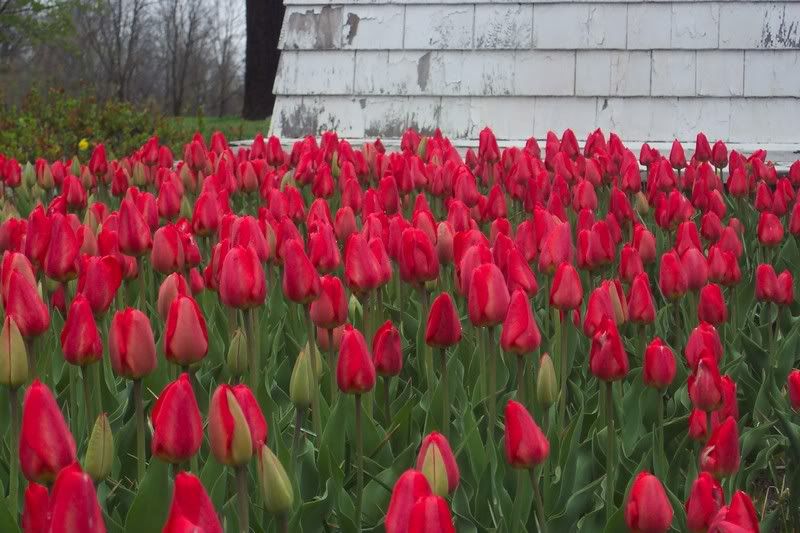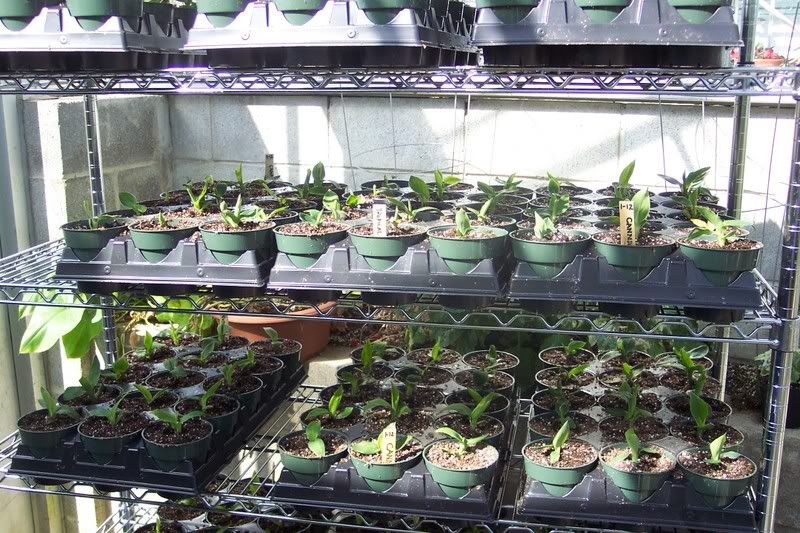In case you haven’t noticed, Christmas is almost here ;). There is something about warm days in the 50′s in Michigan that just doesn’t feel like Christmas. Despite the weather, this is the week we deliver poinsettias as gifts from the greenhouse.
The warm days are actually good for our deliveries; poinsettias can get chilled and damaged if they are exposed to temperatures below 50 degrees for any length of time. We wrap them up in foil pot covers and clear plastic sleeves so that even if it is cold outside, they have their own little “greenhouse” to keep them warm as we move them from car to house.
We grew 5 varieties this year: Freedom Red, Prestige, Winter Rose Red, Jingle Bells, Cranberry Punch, and Plum Pudding. These plants are not grown from seed but from cuttings. Poinsettia breeding and variety development is a huge industry these days. We get our stock as started cuttings, that is to say, they are rooted and have a few leaves on them.
Freedom Red is the most commonly grown poinsettia in the country. This is the red variety that is offered for sale in most stores and shops and is the red poinsettia everyone thinks of whenever poinsettias are mentioned. They are available in other colors as well.
Prestige looks a lot like Freedom but grows a little more upright, that is, their branches hold the leaves up higher. Prestige also blooms a little later than Freedom. We grew red but, again, other colors are out there.
Winter Rose Red has unusual bracts because they are curled and hardly look like a poinsettia at all. I was wondering how these would go over, so I just grew a couple dozen or so. Turns out they are the favorite this year. I have seen these at the stores too.
Jingle Bells you may have seen before, it is red with festive pink spots. These were also very popular with our folks this year.
Cranberry Punch has a very striking color – red with a background of almost florescent pink. You would almost say it glows!
No one really knew what to think about Plum Pudding. This variety grows very upright and has destinctive purple bracts. Even so, some rebels out there chose those over the more common red ones.
Every year someone asks if poinsettias are poisonous. The answer would be, no, they are quite harmless. However, despite the tasty sounding names some of them have, they are not something you would want to put into your salad.
I hope you enjoy your poinsettia this year too.
No dashing through the snow this time.
Bob
here’s a great shot of Jingle Bells poinsettia : http://londonderry.smugmug.com/keyword/poinsettia/427606838_tVx63nh#!i=427606838&k=tVx63nh

